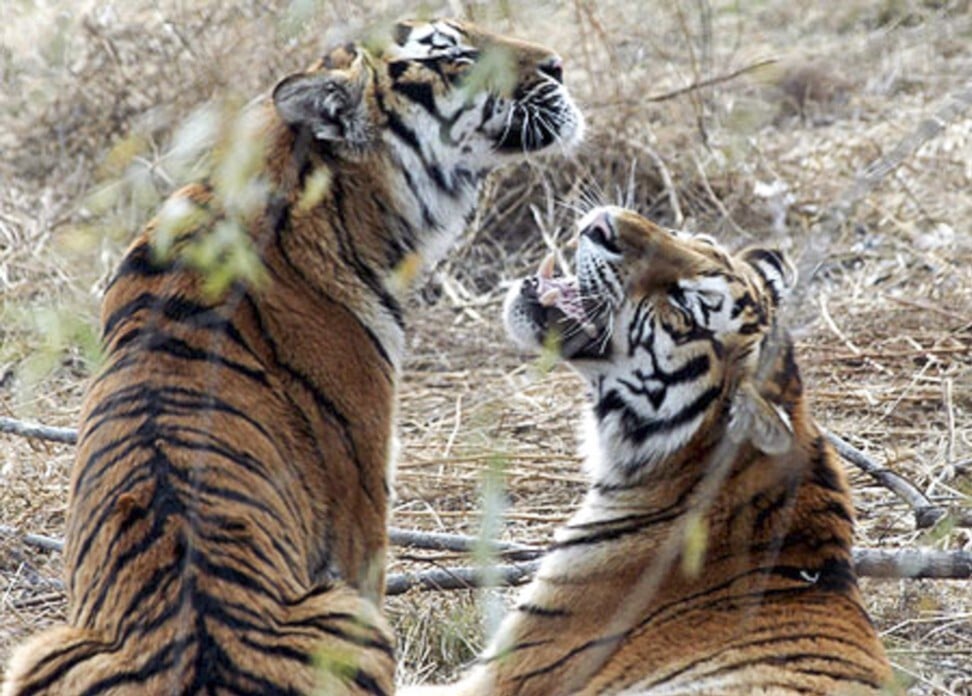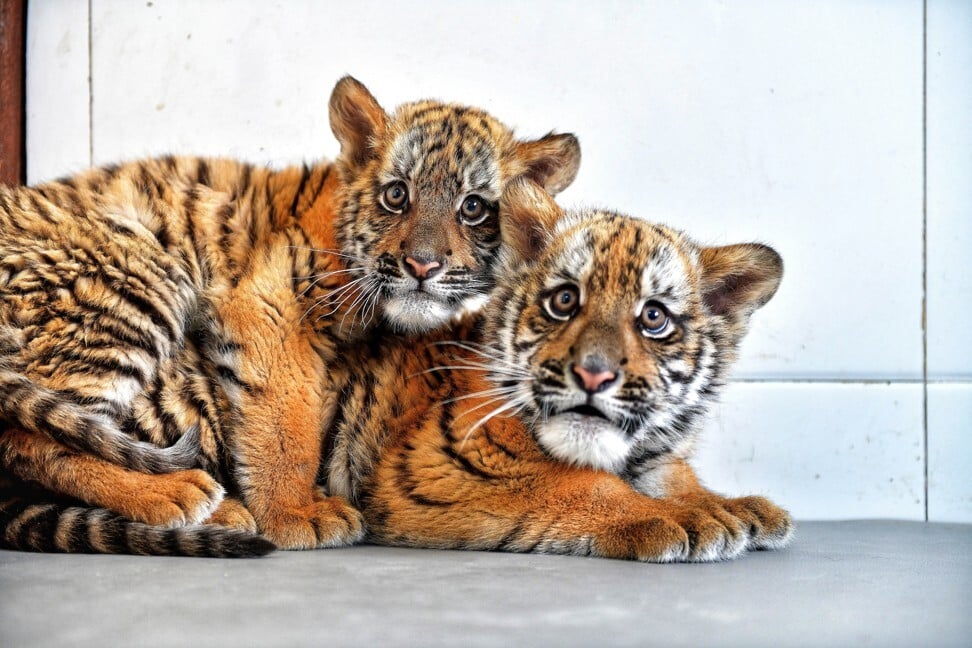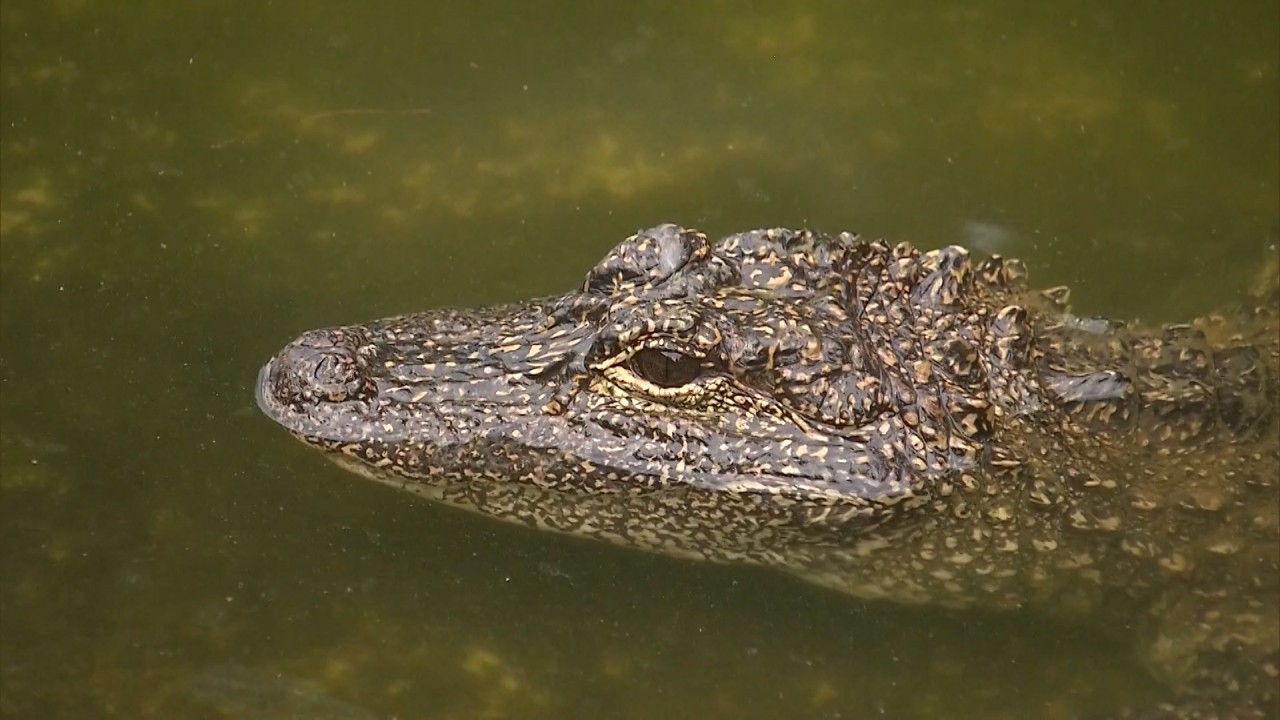
Giant pandas take the lion’s share of conservation attention but China has many endangered species in need such as tigers, dolphins and alligators
- The giant panda’s success in coming back from the brink has overshadowed the plight of less cute species, say some conservationists
- China has hundreds of species on the IUCN’s red list, many of them critically endangered
China is one of the world’s mega-diverse countries with varied environments ranging from desert to tropical forest, but after decades of economic development and population growth, hundreds of its animals and plants have been pushed to the edge of extinction.
The global benchmark for tracking endangered species is the IUCN Red List which sorts species into nine categories, from least concern, near threatened, vulnerable, endangered, critically endangered through to extinct in the wild and extinct, as well as data deficient and not evaluated.

01:28
Giant pandas in Hong Kong mate naturally for the first time in a decade
China has hundreds of species on the IUCN’s list, many of them critically endangered, but a lot are overlooked as they are often not considered cute or charismatic enough to motivate conservation efforts, according to some.
Olivia Couchman, the Zoological Society of London’s (ZSL) manager for its EDGE of Existence programme (Evolutionarily Distinct and Globally Endangered), told environment website Mongabay that most of the world’s seriously endangered animals received little or no conservation funding or support.
“Large sections of the tree of life [are] completely absent from the conservation agenda,” she said.
If China’s finless porpoise is doomed, so is the mighty Yangtze River on which it depends
“Charisma is subjective and even though EDGE species may not be traditionally charismatic, there is nothing else like them on Earth; they are unique in the way they live, look and behave.”

The World Wildlife Fund (WWF), which uses the giant panda as its logo, argued the success in bringing the panda back from the brink did not necessarily mean other animals were overlooked.
“WWF has been working on giant panda conservation for over 40 years in China, with some incredible success, including helping to establish an integrated network of giant panda reserve wildlife corridors to connect isolated panda populations as well as working with local communities to develop sustainable livelihoods and minimise impacts on the forests,” Zhou Fei, WWF’s chief programme officer in China, told the South China Morning Post.
“Over this period giant pandas have increased by over 60 per cent.
“It is important to let you know that panda conservation doesn’t mean that we protect pandas alone and overlook other wildlife. Panda is an umbrella species and by panda conservation WWF helps to protect lots of wildlife and wild plants in panda habitat.”

Here are some of the often-overlooked animals in China facing extinction.
Siberian tiger
Siberian tigers are listed as endangered and are found in a small region between the borders of North Korea, Russia and China. Recent censuses have estimated the remaining wild population as anywhere from 450 to 550 animals in the wild.
“[Siberian] tigers should be the top priority for wildlife conservation in China now,” said WWF’s Zhou.
The key threats they face are habitat loss and illegal poaching.

01:41
Critically endangered Siberian tigers and Amur leopards protected by Chinese conservationists
“There are only around 30 wild tigers in China. The key threat to tiger conservation is habitat fragmentation. Very similar to panda habitat, there is a lack of wildlife corridors to connect isolated small tiger populations,” said Zhou.
“Market demand of tiger products including tiger bone wine, skin and meat. Market demand stimulates illegal trade. There are over 6,000 tigers in various farms in China. According to market research and media reports, some of the tiger farms contribute to the illegal trade of tiger parts.”
Southern Chinese tiger

The southern Chinese tiger is critically endangered and is considered extinct in the wild.
There are about 150 animals held in captivity in China and around 72 scattered across the world in zoos and private collections. It once roamed across much of southern China, including parts of Hong Kong, before hunting and habitat destruction drove it to the brink of extinction.
Given the small genetic pool of the remaining animals and the limited resources available, attempts to reintroduce the animal into the wild have been controversial, with many conservationists arguing that efforts should be focused on the Siberian tiger as its higher population means it has a far greater chance of survival in the wild over the longer term.
Chinese alligator

The only living relative of the North American alligator, the Chinese alligator which lives in the Yangtze River region of China is critically endangered.
There are an estimated 68 to 86 individuals in the wild according to IUCN, with several thousand held in captivity.
The key threats to the species survival include habitat fragmentation and degradation, hunting by humans, natural disasters such as floods and droughts, geographic separation of populations, and pollution.

02:05
Endangered Chinese alligator population recovering amid China’s artificial breeding efforts
Despite receiving official protection in 1972, it has only been in recent decades that substantial efforts, such as captive breeding and enforcing a ban on poaching, have been made to save the species.
Wild Bactrian camel

With a surviving wild population numbering less than 1,000 between China and Mongolia, the Bactrian camel is listed as critically endangered.
Threats include hunting for food and habitat loss.
Hainan black-crested gibbon

The endangered animal is found only on Hainan, a tropical island off the southern coast of China. Adult males are jet black, while the fur of females turns a rich gold when they reach maturity.
Key threats include the small population size, accidental killing by hunters seeking other animals, and habitat loss.
Yangtze River finless porpoise

The Yangtze finless porpoise is fleshy and rotund — nicknamed “river pig” by locals — and its mouth is fixed in a permanent cartoonish grin. In 1991, China counted around 2,500 finless porpoises in the Yangtze. Today, just under 1,000 remain.

01:52
Under a fishing ban, critically endangered finless porpoises spotted more often in Chinese lake
Chinese giant salamander

In the last 30 years, the Chinese giant salamander has undergone an 80 per cent decline in population. It is unclear how many remain in the wild as the amphibian is spread across a wide and highly fragmented habitat. Hunting for human consumption is the primary threat to this species. One of the largest salamanders in the world, the species is listed as critically endangered.
The Post was unable to reach the Chinese National Forestry and Grassland Administration and the Ministry of Agriculture and Rural Affairs, which are jointly responsible for endangered species, for comment.

